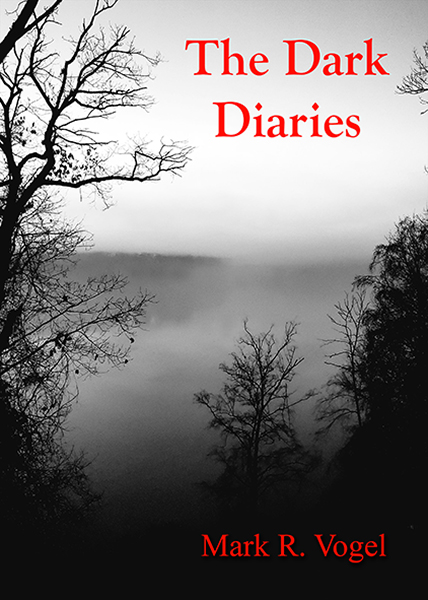Unlike most of the closing chapters in the Universal Monster Series, Ford Beebe’s The Invisible Man’s Revenge is a steadfast effort. Interestingly, the film is the only script, with the except of James Whale’s original, that wasn’t penned by Curt Siodmak as mystery writer Bertram Millhauser posits a morally ambiguous screenplay which permits John Carradine to shine and special efforts wizard John Fulton to polish his Oscar nominated creations one last time. Ultimately, Beebe’s production allows his audience to leave the Invisible Man franchise content with the character’s creation, development, and resolution.
Robert Griffin (Jon Hall) has recently escaped the Capetown Asylum after killing three of its employees, boarding the Ella Campbell, and escaping to London. Having docked, Griffin arrives at the estate of Jasper and Irene Herrick (Lester Matthews and Gale Songergaard respectively), declaring that the rights to Herrick Mines Ltd. be transferred to him considering its owners abandoned him in Africa during the mine’s discovery and allocation five years prior. Unable to coerce the Herricks to depart with either their company, estate, or daughter, Julie (Evelyn Ankers), Robert seeks the assistance of Doctor Peter Drury (John Carradine), demanding he be allowed to undergo the experimental treatment which will either make him invisible or kill him. The experiment a success, Griffin then returns to the Herricks’ and restates his demands, however, in order to collect his assets, he must become visible once more. Unfortunately, Drury has yet to successfully sustain a test subject’s visual stability after inducing translucency, though a complete blood transfusion will allow the invisible subject to become temporary visible. Will Robert be able to assume what is rightfully his?
What is most intriguing about Beebe’s production is its lack of moral conviction or direction. At no time are we given any firm evidence that Robert’s declarations (who, though he shares the surname with other figures in the Invisible Man cycle, is nonetheless distractingly unaffiliated) are legitimate as both Matthews and Sondergaard masterfully retain poker faces while deliberating upon how to contend with their supposedly left-for-dead business associate. However, though an ethical doppelganger to the film’s predecessor in the series–Edwin Marin’s Invisible Agent–Beebe’s work ultimately offers little sustenance amid its caustic distance outside of teasing the audience with the insinuation that the evidence as to which party’s claim is valid will ultimately be provided.
John Carradine’s portrayal of the less-than-mad scientist is played to a tee as he patiently anticipates and masterfully contends with the refugee’s hostile insistencies and demands. Beebe grants an air of authority (as well as humanity) to the figure of Drury by surrounding him with various test subjects-cum-pets as an invisible bird talks while a translucent canine barks in defense of its owner. It is in the doctor’s laboratory that we are permitted to witness John Fulton’s cumulative efforts after making five films of characters dissipate before our eyes. Luckily, it was during Beebe’s production that Fulton finally got the formula convincingly honed as the dissolving dimmer switch is gradually turned as Robert slowly dissolve into nothingness. Yet, embarrassingly due to its horrible obviousness, when an invisible Robert lifts Mark Foster (Alan Curtis), Julie’s fiancée, onto a table, every single suspension cable glimmers in the lights, of which, Millhauser couldn’t restrain from having Foster, a journalist for The Courier–after believing he is hearing voices–utter that even he was beginning to believe his own stories.
Lastly, though the final solo outing for the character, Beebe not only explains the physics of invisibility–differences in the refraction index in relation to the said index of the object’s environment–he presents an interesting metaphor of vampirism in that the character of Robert needs new blood on a regular basis to thwart his invisibility, thus paralleling the figure’s lack of substance via another negligent void. Fittingly, considering The Invisible Man’s Revenge is the conclusion to the franchise, the oftentimes malicious character of the Invisible Man is figuratively placed in Hell by the climax of the film as the end credits roll amid the wake of Robert’s death as we peer into a roaring fireplace.
Aside from the Mummy, the Invisible Man is the only Universal monster to be given an extended dramatic series without the necessity of having to be combined with other creatures in the studio’s horror sequence in hopes of retaining audience interest (the Creature from the Black Lagoon lasting through only three films). Distinctively, the Invisible Man is the only character to be allotted a comedic work unto himself (actually herself, that is, with A. Edward Sutherland’s The Invisible Woman). Though not nearly as well-crafted, Ford Beebe’s characterization of Robert Griffin ends the Invisible Cycle where it began: With an overtly malevolent figure which unabashedly terrorizes with wicked intent at a level incomparable to any of his contemporaries. Unjustly, the Invisible Man resides on a much lower rung on the appreciation ladder when compared to his peers, yet desires to follow shortly after the figures of Frankenstein’s creation, Dracula, and the Wolf Man (the latter of which I would be willing to argue he usurps in many respects). Natch, the Invisible Man will be sorely missed.
-Egregious Gurnow
- Interview with J.R. Bookwalter - January 22, 2015
- Interview with Andrew J. Rausch - January 22, 2015
- Interview with Rick Popko and Dan West - January 22, 2015
- Interview with Director Stevan Mena (Malevolence) - January 22, 2015
- Interview with Screenwriter Jeffery Reddick (Day of the Dead 2007) - January 22, 2015
- Teleconference interview with Mick Garris (Masters of Horror) - January 22, 2015
- A Day at the Morgue with Corri English (Unrest) - January 22, 2015
- Interview with Writer/Director Nacho Cerda (The Abandoned, Aftermath) - January 22, 2015
- Interview with Actress Thora Birch (Dark Corners, The Hole, American Beauty) - January 22, 2015
- Interview with Actor Jason Behr, Plus Skinwalkers Press Coverage - January 22, 2015


